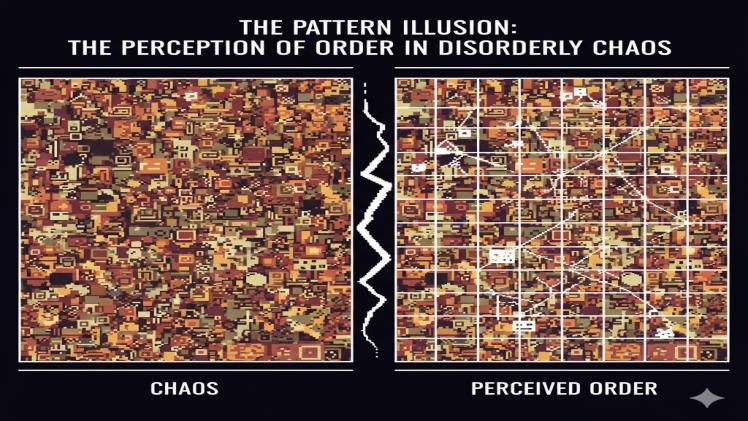
Man is a pattern-seeking machine. From the moment we rise in the morning and check our notifications to the passing images in the clouds, we are conditioned to find meaning even where it does not exist. This phenomenon, which is sometimes referred to as the pattern illusion, has been used to explain why we occasionally see structure where none exists in reality, and why our brains sometimes deceive us into thinking a story in a complex situation.
How We Perceive Patterns
It is not a weakness in our way of perceiving order in disorder but a benefit of evolution. This tendency is known as Apophenia among cognitive psychologists, a tendency to draw unrelated dots. In that case, put confirmation bias into the equation, and the randomness of the streaks on a roulette wheel or the randomness in the posts in a social feed begins to take on meaning.
Our brains especially find it easy to differentiate familiar forms. Fusiform face area activation occurs when we imagine we perceive a face in the shadows of a building, and dopamine rewards us when we recognize success patterns, maintaining the loop. In the digital era, it manifests as decision fatigue, in which the mental shortcuts we have become used to inform decisions over rational thought. Our brains desire instant gratification, which is why we are more than willing to fall into patterns that are fast and easy to digest. In National Casino Spain, for example, there are many reports of casual players experiencing what they call a rhythm or sequence in game outcomes, even though, mathematically, each hand or spin is independent. Perceiving randomness as order gives the brain an illusion of control.
Table of Pattern Induction Illusion and Explanation.
| Example | Perceived Pattern | Psychological Explanation |
| Faces in clouds | Human face | Pareidolia |
| Winning streaks in games | Hot hand | Gambler’s fallacy |
| Random stock movements | Trend | Apophenia |
The brain science of seeing order.
The brain does not perceive patterns; it glorifies them. Dopamine loops reinforce false findings, and we become stuck to our cognitive biases. Once our neural networks have found a potential pattern, this activates the reward circuits, and we have an enjoyable aha moment–even when the pattern is entirely an illusion.
According to evolutionary biology, this mechanism helped our ancestors survive. To see a disguised predator or anticipate weather changes was to survive. Nowadays, digital platforms and online interactions take over those circuits and use various forms of reward, such as likes, spins, or notifications, to capitalize on our pattern-seeking instincts.
Pattern Illusion in the Digital World.
Whenever you spend hours discussing the winning tricks on the blackjack websites on the internet or watching the streaks in the virtual casino, you have gone through the lure of pattern illusions personally. The brain is fooled into creating trends that do not exist by just looking at the results, even without a single touch of a chip.
This is not just limited to gambling. The same cognitive biases nourish social media, news feeds and even customized shopping recommendations. Digital engagement is driven by the dopamine loop of noticing a perceived pattern, such as which post will go viral and which trend will spike. Every variable reward reinforces behavioural patterns, leading to long-term decision fatigue.
Pattern Illusion in Digital Behaviour
| Context | Perceived Pattern | Behavioral Effect |
| Blackjack online casino | Hot streaks | Risky bets, chasing losses |
| Social media feed | Viral trend | Increased scrolling, engagement loops |
| Stock market charts | Momentum | Emotional trading, overconfidence |
Professional View of Pattern Illusion.
Behavioural economists frequently emphasize that these illusions are not harmless quirks; rather, the circuits that enabled humans to survive for thousands of years have now made us susceptible to the pursuit of fake patterns on the internet. The most important action is to be aware: once you know that your brain is deceiving you, it is impossible to make rash decisions and overinvest.
In the context of digital gambling, sites like National Casino Spain illustrate how the brain seeks satisfaction and order through manipulating subconscious stimuli and unpredictable results. Experts are also not immune: seeing patterns in chance rather than probability is sometimes possible due to cognitive biases and the work of dopamine, which helps us perceive patterns.